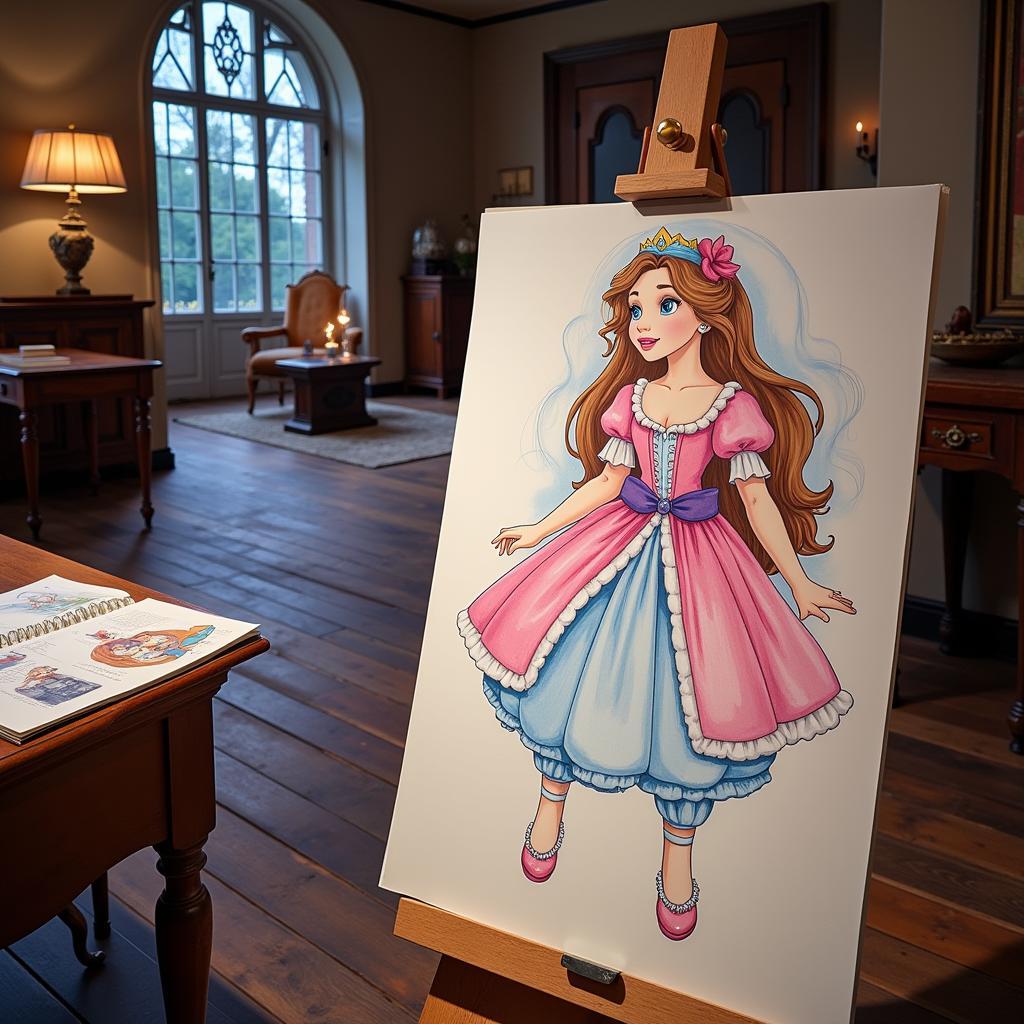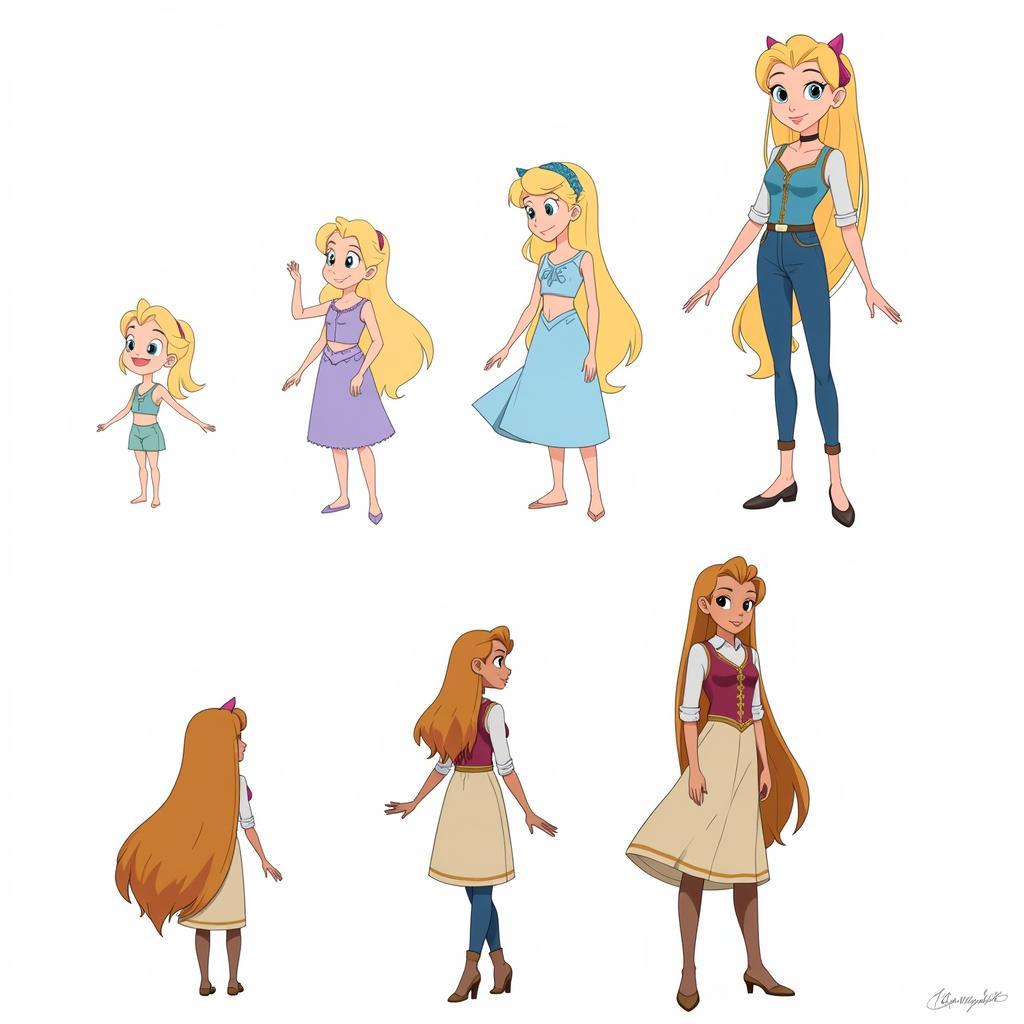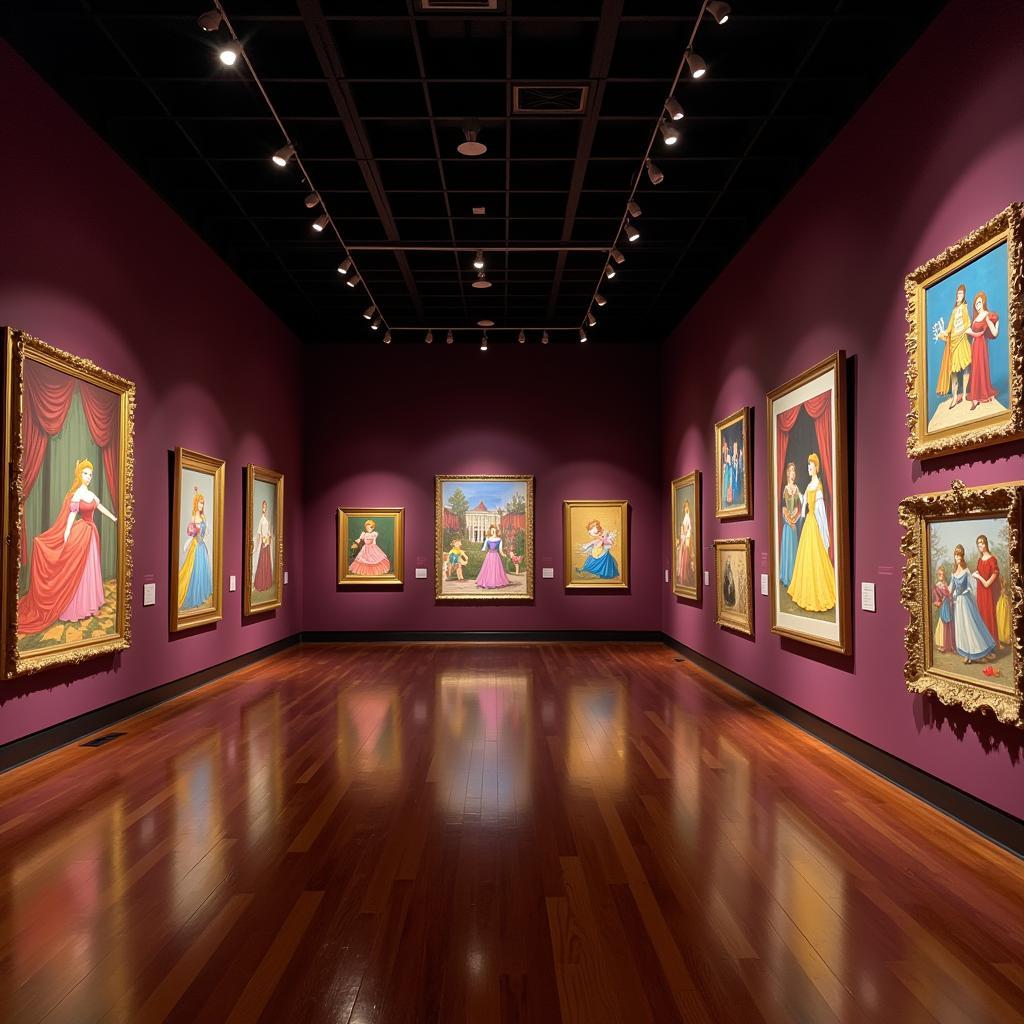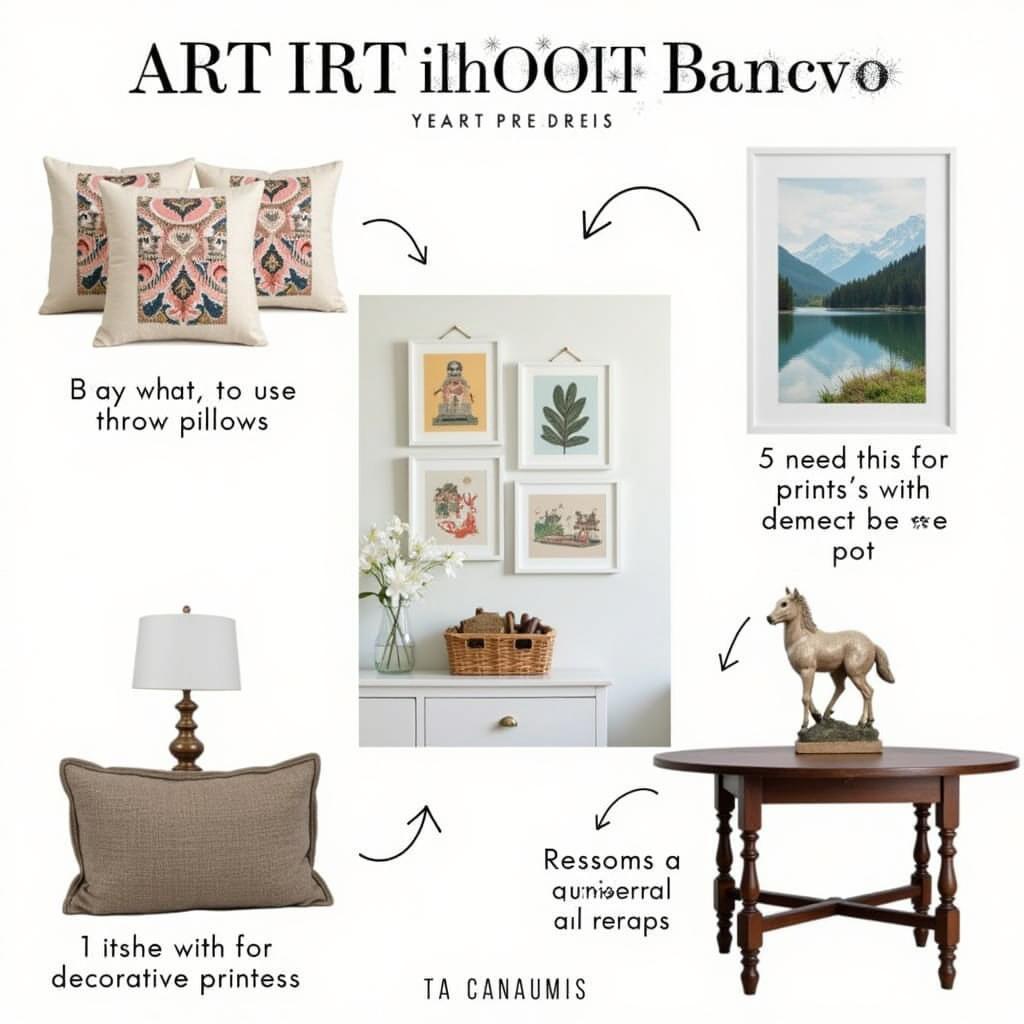Unveiling the Magic: Exploring the Enchanting World of Disney Art Sleeping Beauty
Few animated films have captured hearts and imaginations quite like Disney’s Sleeping Beauty. Released in 1959, this cinematic masterpiece continues to enchant audiences with its timeless tale of love, magic, and the battle between good and evil. Beyond the captivating story, “Sleeping Beauty” stands as a testament to the artistry of Disney animation, a realm where skilled artists breathed life into a classic fairytale. Let’s delve into the enchanting world of Disney art, focusing on the visual splendor of “Sleeping Beauty.”
A Fusion of Storybook Charm and Artistic Innovation
 Concept Art for Sleeping Beauty
Concept Art for Sleeping Beauty
Disney’s “Sleeping Beauty” marked a turning point in the studio’s animation style. While previous films embraced a charming simplicity, “Sleeping Beauty” aspired to a new level of detail and sophistication. Inspired by medieval art, particularly the intricate tapestries and illuminated manuscripts of the era, the film’s visual style transported audiences to a world of castles, forests, and magic.
The Influence of Artistic Masters
The artists behind “Sleeping Beauty” drew inspiration from a diverse range of artistic influences. The work of renowned artist Eyvind Earle played a pivotal role in shaping the film’s visual identity. Earle’s signature style, characterized by bold lines, stylized forms, and rich color palettes, is evident throughout the film, from the enchanting forest landscapes to the majestic interiors of King Stefan’s castle.
“Eyvind Earle brought a unique vision to ‘Sleeping Beauty,'” says animation historian John Canemaker. “His artistic sensibilities helped create a world that was both familiar and fantastical, grounded in classical art yet brimming with Disney magic.”
The Evolution of Aurora: From Sketches to Screen Icon
 Character Design Progression of Aurora
Character Design Progression of Aurora
The creation of Princess Aurora, the film’s titular Sleeping Beauty, was a testament to the collaborative spirit of Disney animation. Artists Marc Davis, known for his work on characters like Cinderella and Tinkerbell, and Tom Oreb, who brought to life the mischievous fairies Flora, Fauna, and Merryweather, contributed to Aurora’s design.
Capturing Grace and Elegance
The challenge for the artists was to create a princess who embodied both regal elegance and youthful innocence. Aurora’s movements are fluid and graceful, reflecting her royal upbringing, while her expressive eyes hint at her kind and gentle nature. Her iconic gown, a swirling masterpiece of pink and blue, has become a symbol of the character and the film itself.
The Enduring Legacy of “Sleeping Beauty” Art
The artistry of “Sleeping Beauty” extends beyond the silver screen. Original concept art, animation cels, and other production materials from the film are highly sought after by collectors and animation enthusiasts. Exhibitions and museum displays showcasing the artistry of “Sleeping Beauty” continue to captivate audiences worldwide.
 Sleeping Beauty Art on Display
Sleeping Beauty Art on Display
Conclusion: A Timeless Masterpiece of Art and Animation
Disney’s “Sleeping Beauty” remains a treasure trove of artistic inspiration. From its stunning visuals to its memorable characters, the film continues to enchant generations of audiences. The meticulous craftsmanship and artistic vision of the Disney animators transformed a classic fairy tale into a timeless cinematic masterpiece, reminding us of the enduring power of animation to transport us to worlds of wonder and imagination.
FAQs about Disney Art and Sleeping Beauty:
-
What inspired the art style of “Sleeping Beauty”?
- Medieval art, particularly tapestries and illuminated manuscripts, heavily influenced the film’s aesthetic.
-
Who were the key artists behind the film’s visuals?
- Eyvind Earle was the key artistic stylist, while Marc Davis and Tom Oreb contributed significantly to character design.
-
What is unique about Aurora’s character design?
- Aurora’s design balances regal elegance with youthful innocence, reflecting her complex character.
-
Where can I see original artwork from “Sleeping Beauty”?
- Animation cels, concept art, and other materials are often featured in exhibitions and are held in private collections.
-
How has “Sleeping Beauty” influenced animation?
- The film’s detailed backgrounds and sophisticated character animation set a new standard for animated films.
Explore More Disney Art:
To further explore the captivating world of Disney art, consider delving into the artistry behind other classic films like art of banner saga. The visual storytelling and character design in these films offer a fascinating glimpse into the evolution of animation.
Need Help? Contact Us
For any assistance, please contact us at:
Phone Number: 02462573573
Email: danteum@gmail.com
Address: Savico Megamall, 7-9 Đ. Nguyễn Văn Linh, Gia Thụy, Long Biên, Hà Nội 10000, Việt Nam.
Our customer support team is available 24/7.


